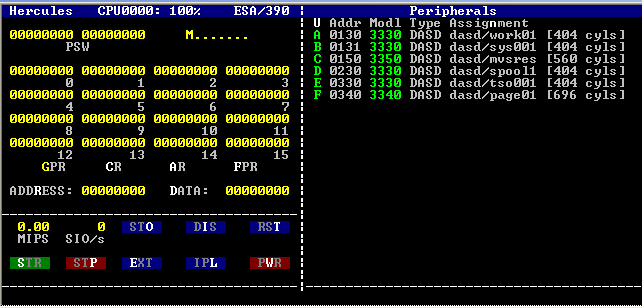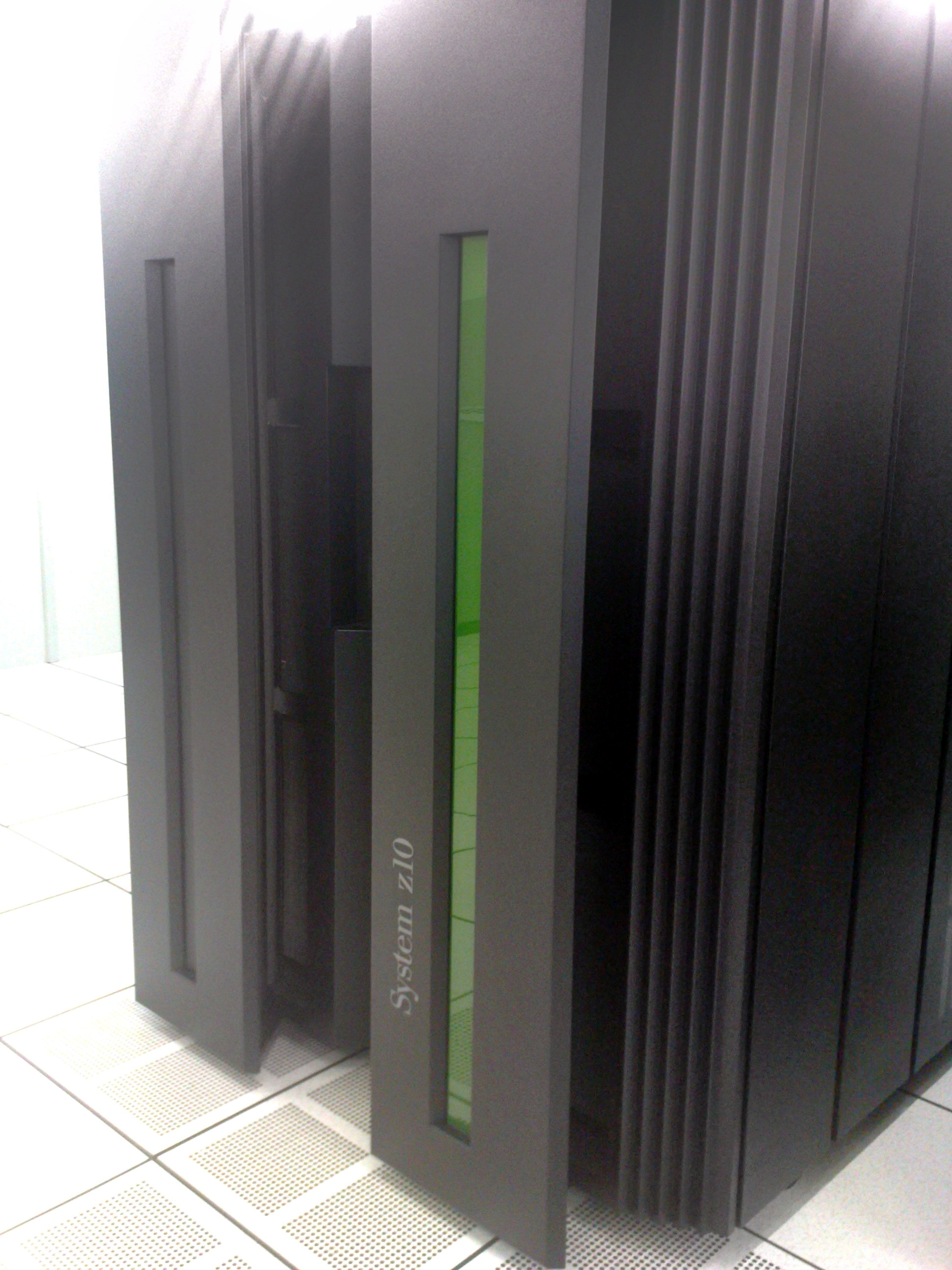|
MVS
Multiple Virtual Storage, more commonly called MVS, is the most commonly used operating system on the System/370, System/390 and IBM Z IBM mainframe computers. IBM developed MVS, along with OS/VS1 and SVS, as a successor to OS/360. It is unrelated to IBM's other mainframe operating system lines, e.g., VSE, VM, TPF. Overview First released in 1974, MVS was extended by program products with new names multiple times, retaining the term MVS in the nomenclature: * first to MVS/SE (MVS/System Extensions),some print media used the singular, MVS/System Extension: Computerworld, 15 Dec 1980 - Page 5; 26 June 1978 - Page 8 * next to MVS/SP (MVS/System Product) Version 1, * next to MVS/XA (MVS/eXtended Architecture), * next to MVS/ESA (MVS/Enterprise Systems Architecture), and then extended * to OS/390 for the System/390 systems, and * finally to z/OS (when 64-bit support was added with the zSeries models). IBM added UNIX support (originally called OpenEdition MVS) in MVS/SP ... [...More Info...] [...Related Items...] OR: [Wikipedia] [Google] [Baidu] |
OS/360 And Successors
OS/360, officially known as IBM System/360 Operating System, is a discontinued batch processing operating system developed by IBM for their then-new System/360 mainframe computer, announced in 1964; it was influenced by the earlier IBSYS/IBJOB and Input/Output Control System (IOCS) packages for the IBM 7090/7094 and even more so by the PR155 Operating System for the IBM 1410/ 7010 processors. It was one of the earliestJust a few years after Atlas Supervisor, Burroughs MCP and GECOS operating systems to require the computer hardware to include at least one direct access storage device. Although OS/360 itself was discontinued, successor operating systems, including the virtual storage MVS and the 64-bit z/OS, are still run and maintain application-level compatibility with OS/360. Overview IBM announced three different levels of OS/360, generated from the same tapes and sharing most of their code. IBM eventually renamed these options and made some significant design changes: ... [...More Info...] [...Related Items...] OR: [Wikipedia] [Google] [Baidu] |
System/370
The IBM System/370 (S/370) is a range of IBM mainframe computers announced as the successors to the IBM System/360, System/360 family on June 30, 1970. The series mostly maintains backward compatibility with the S/360, allowing an easy migration path for customers; this, plus improved performance, were the dominant themes of the product announcement. Early 370 systems differed from the 360 largely in their internal circuitry, moving from the Solid Logic Technology hybrid integrated circuits containing separate transistors to more modern monolithic integrated circuits containing multiple transistors per integrated circuit, which IBM referred to as Monolithic System Technology, or MST. The higher density packaging allowed several formerly optional features from the 360 line to be included as standard features of the machines, floating-point support for instance. The 370 also added a small number of new instructions. At the time of its introduction, the development of virtual mem ... [...More Info...] [...Related Items...] OR: [Wikipedia] [Google] [Baidu] |
Z/OS
z/OS is a 64-bit operating system for IBM z/Architecture mainframes, introduced by IBM in October 2000. It derives from and is the successor to OS/390, which in turn was preceded by a string of MVS versions.Starting with the earliest: * OS/VS2 Release 2 through Release 3.8 * MVS/System Extensions (MVS/SE) * MVS/System Product (MVS/SP) Version 1 * MVS/System Product Version 2 (MVS/Extended Architecture, MVS/XA) * MVS/System Product Version 3 (MVS/Enterprise Systems Architecture, MVS/ESA) * MVS/ESA SP Version 4 * MVS/ESA SP Version 5 Like OS/390, z/OS combines a number of formerly separate, related products, some of which are still optional. z/OS has the attributes of modern operating systems but also retains much of the older functionality that originated in the 1960s and is still in regular use—z/OS is designed for backward compatibility. Major characteristics z/OS supportsSome, e.g., TSO/E, are bundled with z/OS, others, e.g., CICS, are separately priced. stable ... [...More Info...] [...Related Items...] OR: [Wikipedia] [Google] [Baidu] |
VM (operating System)
VM (often: VM/CMS) is a family of IBM virtual machine operating systems used on IBM mainframes System/370, System/390, zSeries, System z and compatible systems, including the Hercules (emulator), Hercules emulator for personal computers. Design The heart of the VM architecture is the ''Control Program'' or hypervisor abbreviated CP, VM-CP and sometimes, ambiguously, VM. It runs on the physical hardware, and creates the virtual machine environment. VM-CP provides full virtualization of the physical machine – including all I/O and other privileged operations. It performs the system's resource-sharing, including device management, dispatching, virtual storage management, and other traditional operating system tasks. Each VM user is provided with a separate virtual machine having its own address space, virtual devices, etc., and which is capable of running any software that could be run on a stand-alone machine. A given VM mainframe typically runs hundreds or thousands of virt ... [...More Info...] [...Related Items...] OR: [Wikipedia] [Google] [Baidu] |
OpenEdition MVS
z/OS UNIX System Services (z/OS UNIX, or informally USS) is a base element of z/OS. z/OS UNIX is a certified UNIX operating system implementation ( XPG4 UNIX 95) optimized for mainframe architecture. It is the first UNIX 95 to not be derived from the AT&T source code. Through integration with the rest of z/OS, additional Time Sharing Option (TSO) commands are available alongside the usual UNIX services, making it possible to process UNIX files using ISPF. Extensions in JCL make it possible to use these files in batch processing. Overview UNIX System Services allows UNIX applications from other platforms to run on IBM System z mainframes running z/OS. In many cases only a recompile is necessary, although additional effort may be advisable for z/OS integration (such as SMP/E installation support). While z/OS UNIX supports ASCII and Unicode, and there's no technical requirement to modify ASCII and Unicode UNIX applications, many z/OS users often prefer EBCDIC support in thei ... [...More Info...] [...Related Items...] OR: [Wikipedia] [Google] [Baidu] |
IBM Basic Assembly Language And Successors
The IBM Basic assembly language and successors is a series of assembly languages and Assembler (computing), assemblers made for the IBM System/360 mainframe system and its successors through the IBM Z. The first of these, the Basic Assembly Language (BAL), is an extremely restricted assembly language, introduced in 1964 and used on 360 systems with only 8 KB of main memory, and only a card reader, a card punch, and a printer for input/output, as part of IBM Basic Programming Support (BPS/360). The Basic Assembler for BAL was also available as part of Basic Operating System/360 (BOS/360). Subsequently, an assembly language appeared for the System/360 that had more powerful features and usability, such as support for assembly language#Macros, macros. This language, and the line of assemblers that implemented it, continued to evolve for the System/370 and the architectures that followed, inheriting and extending its syntax. Some in the computer industry referred to these un ... [...More Info...] [...Related Items...] OR: [Wikipedia] [Google] [Baidu] |
OS/VS2 (SVS)
Single Virtual Storage (SVS) refers to Release 1 of Operating System/Virtual Storage 2 (OS/VS2); it is the successor system to the MVT option of Operating System/360. OS/VS2 (SVS) was a stopgap measure pending the availability of MVS, although IBM provided support and enhancements to SVS long after shipping MVS. SVS provides a ''single'' 16MiB address space which is shared by all tasks in the system, regardless of the size of physical memory. Differences from MVT OS/360 used the Interval Timer feature for providing time of day and for triggering time-dependent events. The support for S/370 made limited use of new timing facilities, but retained a dependency on the Interval Timer. SVS uses the TOD Clock, Clock Comparator and CPU Timer exclusively. OS/360 loads error recovery and transient SVC routines from SYS1.SVCLIB into small transient areas. SVS loads these routine from SYS1.LPALIB into the Pageable Link Pack Area (PLPA) during an IPL with the Create LPA (CLPA) option; there ... [...More Info...] [...Related Items...] OR: [Wikipedia] [Google] [Baidu] |
PL/S
PL/S, short for Programming Language/Systems, is a "machine-oriented" programming language based on PL/I. It was developed by IBM in the late 1960s, under the name Basic Systems Language (BSL), as a replacement for assembly language on internal software projects; it included support for inline assembly and explicit control over register usage. Early projects using PL/S were the batch utility, IEHMOVE, and the Time Sharing Option of MVT, TSO. By the 1970s, IBM was rewriting its flagship operating system in PL/S. Although users frequently asked IBM to release PL/S for their use, IBM refused, saying that the product was proprietary. Their concern was that open PL/S would give competitors, Amdahl, Itel (National Advanced Systems), Storage Technology Corporation, Trilogy Systems, Magnuson Computer Systems, Fujitsu, Hitachi, and other PCM vendors a competitive advantage. However, even though they refused to make available a compiler, they shipped the PL/S source code to large ... [...More Info...] [...Related Items...] OR: [Wikipedia] [Google] [Baidu] |



